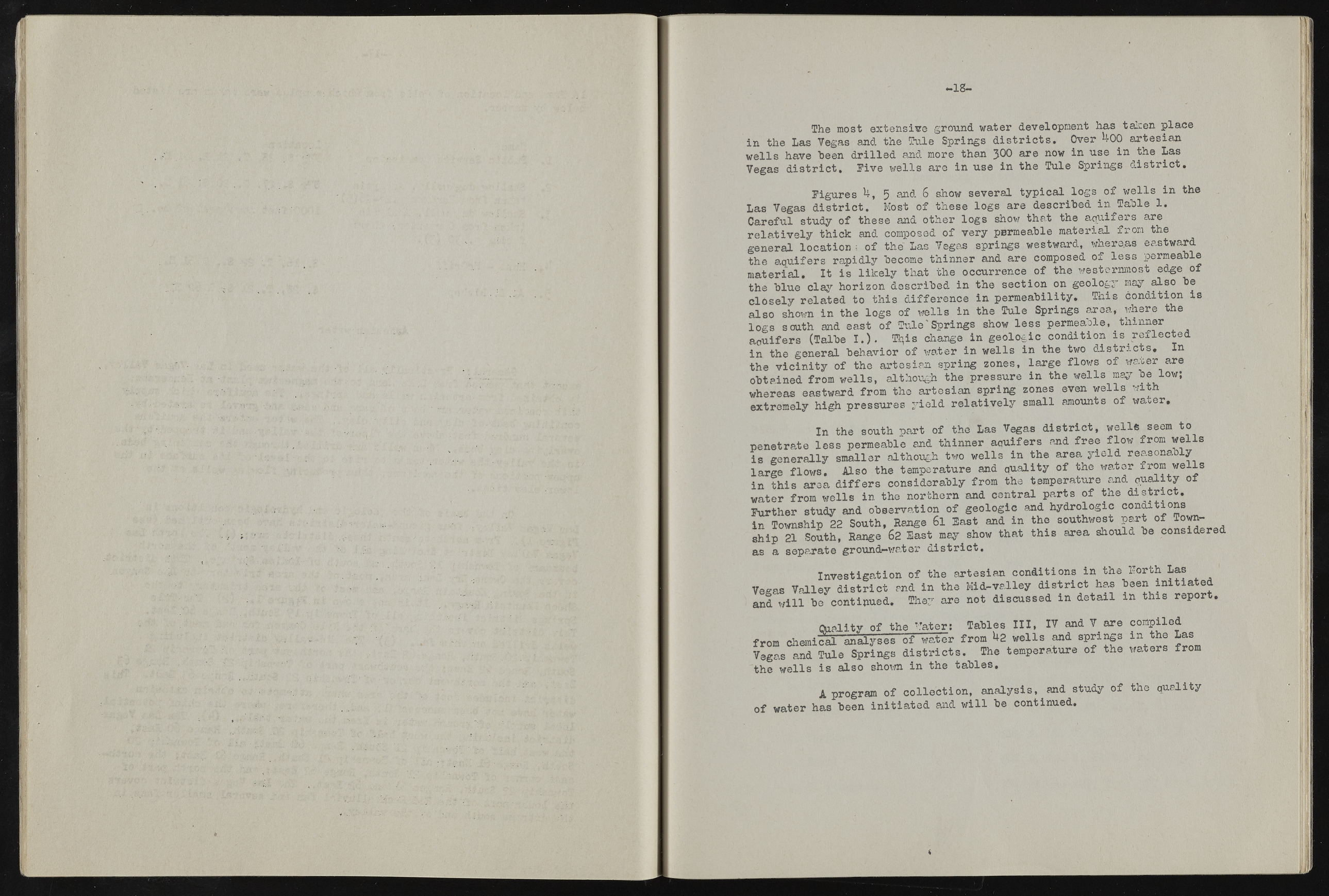Copyright & Fair-use Agreement
UNLV Special Collections provides copies of materials to facilitate private study, scholarship, or research. Material not in the public domain may be used according to fair use of copyrighted materials as defined by copyright law. Please cite us.
Please note that UNLV may not own the copyright to these materials and cannot provide permission to publish or distribute materials when UNLV is not the copyright holder. The user is solely responsible for determining the copyright status of materials and obtaining permission to use material from the copyright holder and for determining whether any permissions relating to any other rights are necessary for the intended use, and for obtaining all required permissions beyond that allowed by fair use.
Read more about our reproduction and use policy.
I agree.Information
Digital ID
Permalink
Details
Member of
More Info
Rights
Digital Provenance
Publisher
Transcription
18- The most extensive ground water development has taken place in the Las Vegas and the Tule Springs districts. Over ^00 artesian wells have "been drilled and more than 300 are now in use in the Las Vegas district. Five *rells are in use in the Tule Springs district. Figures 5 and 6 show several typical logs of wells in the Las Vegas district. Most of these logs are described in Table 1. Careful study of these and other logs show that the aquifers are relatively thick and composed of very permeable material from the general location of the Las Vegas springs westward, where.as eastward the aquifers rapidly become thinner and are composed of less permeable material. It is likely that the occurrence of the westernmost edge of the blue clay horizon described in the section on geology may also be clCsely related to this difference in permeability. This condition is also shown in the logs of wells in the Tule Springs area, where the logs south and east of Tule'Springs show less permeable, thinner aouifers (Talbe I . ) . Ti^is change in geologic condition is reflected in the general behavior of wa.ter in wells in the two districts. In the vicinity of the artesian spring zones, large flows of water are obtained from wells, although the pressure in the wells may be low; whereas eastward from the artesian spring zones even wells with extremely high pressures yield relatively small amounts of water. In the south part of the Las Vegas district, wells seem to penetrate less permeable and thinner aquifers and free flow from wells is generally smaller although two wells in the area yield reasonably large flows. Also the temperature and quality of the water from wells in this area differs considerably from the temperature and quality of water from wells in the northern and central parts of the district. Further study and observation of geologic and hydrologic conditions in Township 22 South, Range 6l East and in the southwest part of ship 21 South, Range 62 East may show that this area should be considered as a separate ground-water district. Investigation of the artesian conditions in the ITorth Las Veeas Valley district and in the Mid-valley district has been initiated, and will be continued. They are not discussed in detail in this report. Quality of the b’ater: Tables III, IV and V are compiled from chemical analyses of WSt?r from U2 wells and springs in the Las V3gas and Tule Springs districts. The temperature of the waters from the wells is also shovm in the tables, A program of collection, analysis, and study of the quality of water has been initiated and will be continued.

